1921: A New Hope in Hungary
For the veterans of the Volunteer Army who formed the ranks of the ROVS, the Russian Civil War had never really ended, and they were just waiting for the right opportunity to resume the fighting. A first opportunity presented itself in Hungary in the early 1920s. In March 1920, former minister of war Miklós Horthy overthrew the communist revolutionary government and seized power in a coup d’état. After some turbulence and a few failed restoration attempts by former Hungarian emperor King Charles I, Horthy’s authoritarian regime finally stabilized in early 1921. Seizing this opportunity, ROVS founder Pyotr Nikolaevich Wrangel (1878–1928) appointed Alexei Aleksandrovich von Lampe (1885–1967) as his official representative to Hungary. Von Lampe met Horthy on March 23, 1921.⁶ Although they agreed on the need to unite against the Bolshevik menace, the collaboration came to naught, Horthy being too limited by the Entente’s Treaty of Trianon, which greatly diminished the Hungarian army.
1933: An Opportunity Seized in Germany
When Wrangel realized Hungary was a dead end, he relocated von Lampe to Germany in 1922. A decade later, in January 1933, the rise of Adolf Hitler opened new opportunities. A pro-Nazi orientation emerged inside the ROVS, supported notably by ideologue Ivan Ilyin and head of the ROVS’ French department Pavel Nikolaevich Shatilov (1881–1962). But the real engineer of the ROVS’ collaboration with Nazi Germany was von Lampe: the moment Hitler became chancellor, von Lampe started pulling strings in the background. As early as October 1933, von Lampe wrote to ROVS president Evgenii Ludwig Miller (1967–1939) about his ties to several Nazi officials.⁷
If Miller managed not to stick his neck out by avoiding meeting any of these Nazi officials personally, the line of the ROVS, of which he was president, was clear. A circular published in 1933 stated that “ROVS will gladly cooperate with a state that is interested in the overthrow of Soviet power and the creation of an all-national government in Russia.”⁸ In the years that followed, ROVS members would willingly overlook the second part of this proclamation to allow for cooperation with the Nazis. Instead of keeping in mind the danger that Hitler’s concept of Lebensraum represented for the future of Russia, the ROVS, led by von Lampe, would develop an acute case of tunnel vision. Rather than focusing on what set them apart, they focused on what they had in common: their antisemitism and the strong belief that something had to be done against the international Jewish conspiracy that was the Soviet Union.
Even though the sources of their respective hatred of Jews were divergent, bridges existed between White Russian fascism and German National-Socialism. The most striking example was the infamous Protocols of the Elders of Zion, first published in Russia in the early 1900s, translated into multiple languages, imported to Germany in the 1920s, plagiarized in Mein Kampf in 1925, and mentioned in Hitler’s balcony speech in 1933. The Protocols purports to document a meeting of world Jewish leaders, the “Elders of Zion,” conspiring to take over the world and to destroy non-Jewish civilization. This hoax became a point of reference and consensus for fascists worldwide, helping them to find common ground between their very different but equally violent ideologies. ROVS president Evgenii Miller himself was convinced of the affinity between White Russian fascism and German National-Socialism. In a circular sent to the ROVS heads of departments dated January 2, 1937, Miller stressed: “because we, the ranks of the ROVS, are, as it were, ideological fascists, we must familiarize ourselves with the theory and practice of [German] Fascism.”⁹
A year later, in 1938, the ROVS took the next step toward collaboration. On October 22, 1938, the German department of ROVS was transformed into the formally independent Union of Russian Military Unions (Obʺedinenie Russkikh Voinskikh Soiuzov, ORVS), still under von Lampe’s direction. This restructuring made it possible to symbolically separate the German section from the rest of ROVS, and thus to constitute a show of good faith for the German authorities. In so doing, the German section of the ROVS became a transparent, easily monitored body rather than a branch of an opaque international organization whose headquarters abroad, over which the Nazis had no control, represented a threat. To ensure the full confidence of the Germans, von Lampe remained in constant communication with the Gestapo after 1938.¹⁰
But this restructuring would have another very convenient consequence: by detaching the ORVS from the rest of the ROVS, it would allow the ROVS to clear itself of all wrongdoing during the war, to distance itself from all accusations of collaboration, and to continue its business after 1945 as if nothing had happened. Von Lampe, for example, was able to flee Germany in 1945 and make a new life for himself in France, where he became the next president of the ROVS from 1957 until his death in 1967.¹¹
1941: German Invasion of the USSR—ROVS Wants In
On June 22, 1941, Hitler embarked on Operation Barbarossa against the USSR. This decision was a turning point in the history of the Second World War. What was supposed to be a lightning war (Blitzkrieg) lasted longer than expected, the Soviet enemy having been underestimated, and turned the conflict into a two-front war, leading to the collapse of the Nazi regime less than four years later.
On May 21, 1941, a month prior to the German attack on the USSR, von Lampe wrote a letter to Field Marshal Walther von Brauchitsch, the Commander-in-Chief of the High Command of the German Army (Oberkommando des Heeres, OKH). Hoping to participate in the forthcoming invasion of the USSR, von Lampe “placed himself, the whole of ORVS and all of its cadres at the disposal of the German high command.”¹²
To make sure that his demand was received positively, von Lampe decided to make yet another demonstration of loyalty to the German command. Accordingly, on July 19, 1941, he issued a directive that ORVS members were to adopt the use of the Nazi salute.¹³
The response to von Lampe’s letter came on August 17, 1941, as the invasion began to stall, just before the start of the fateful siege of Leningrad that will cause the loss of the Germans when they failed, 900 days later. In that response, von Brauchitsch informed von Lampe that the members of ORVS could not be used in the Wehrmacht.¹⁴ The only form of participation available to them was to enlist as interpreters, the requirements for which the Wehrmacht was sending through the Russische Vertrauensstelle (otherwise known as UDRE—Upravlenie delami russkoi emigratsii, the administration of Russian émigré affairs).¹⁵
In 1922, the Weimar government had created the Office for Russian Refugees in Germany (Vertrauensstelle für russische Flüchtlinge in Deutschland) under the leadership of Sergei Dmitrievich Botkin, Russian ambassador to Berlin from 1919 to 1920, when he represented the governments of White Russian generals Alexander Kolchak and Anton Denikin. The purpose of this office was to register and coordinate Russian emigrants arriving on German territory.
In 1936, the office was taken over by the Nazis, who appointed Vasilii Viktorovich Biskupskii (1878-1945) as its head and renamed it Russische Vertrauensstelle in Deutschland (RVst). Biskupskii was a former leader of the West Russian Volunteer Army who had emigrated to Germany in 1922 and become one of the first supporters of Hitler, participating in his first attempted coup (Kapp Putsch) in 1920 and harboring the fugitive Hitler in his own apartment after the second attempted coup (Beerhall Putsch) of 1923. After Hitler took power in 1933, Biskupskii remained in close contact with the NSDAP and corresponded regularly with Heinrich Himmler.¹⁶
Following the invasion of Russia in June 1941, the Germans had a growing need for interpreters and translators to be sent to the front or to POW camps. The recruitment of those interpreters among the registered Russian emigrants of Germany became Biskupskii’s primary goal for the Russische Vertrauensstelle, and by May 1943, it had sent 1,200 interpreters to the Wehrmacht, many of whom were members of the ORVS.¹⁷ A significant number of these interpreters were then recruited into the Ninth Army¹⁸ on the Eastern Front, so they still participated in the war against the Soviet government, even if Hitler did not trust them enough to put weapons in their hands. They nevertheless had plenty of blood under their fingernails: indeed, one has to remember that wartime interpreters are never “just interpreting” and that research shows a pattern of interpreters participating in war crimes, notably torture.¹⁹
Biskupskii’s right-hand man, Sergei Vladimirovich Taboritskii (1897-1980), registered the émigrés and provided them with papers and permission to travel.²⁰ Taboritsky was also well-connected among the Nazi leadership: in 1939 he had created the National Organization of Russian Youth (Natsionalʹnaia organizatsiia russkoi molodezhi, NORM), the only Russian youth organization authorized on the territory of the Reich. The SS and Abwehr worked closely with NORM to recruit Russian youth to send as saboteurs to the Soviet rear during the war.²¹ NORM was subject to the Hitlerjugend, and thus young Russian émigrés were also included in the all-German project of Nazi schooling and upbringing.²²
For the veterans of the Volunteer Army who formed the ranks of the ROVS, the Russian Civil War had never really ended, and they were just waiting for the right opportunity to resume the fighting. A first opportunity presented itself in Hungary in the early 1920s. In March 1920, former minister of war Miklós Horthy overthrew the communist revolutionary government and seized power in a coup d’état. After some turbulence and a few failed restoration attempts by former Hungarian emperor King Charles I, Horthy’s authoritarian regime finally stabilized in early 1921. Seizing this opportunity, ROVS founder Pyotr Nikolaevich Wrangel (1878–1928) appointed Alexei Aleksandrovich von Lampe (1885–1967) as his official representative to Hungary. Von Lampe met Horthy on March 23, 1921.⁶ Although they agreed on the need to unite against the Bolshevik menace, the collaboration came to naught, Horthy being too limited by the Entente’s Treaty of Trianon, which greatly diminished the Hungarian army.
1933: An Opportunity Seized in Germany
When Wrangel realized Hungary was a dead end, he relocated von Lampe to Germany in 1922. A decade later, in January 1933, the rise of Adolf Hitler opened new opportunities. A pro-Nazi orientation emerged inside the ROVS, supported notably by ideologue Ivan Ilyin and head of the ROVS’ French department Pavel Nikolaevich Shatilov (1881–1962). But the real engineer of the ROVS’ collaboration with Nazi Germany was von Lampe: the moment Hitler became chancellor, von Lampe started pulling strings in the background. As early as October 1933, von Lampe wrote to ROVS president Evgenii Ludwig Miller (1967–1939) about his ties to several Nazi officials.⁷
If Miller managed not to stick his neck out by avoiding meeting any of these Nazi officials personally, the line of the ROVS, of which he was president, was clear. A circular published in 1933 stated that “ROVS will gladly cooperate with a state that is interested in the overthrow of Soviet power and the creation of an all-national government in Russia.”⁸ In the years that followed, ROVS members would willingly overlook the second part of this proclamation to allow for cooperation with the Nazis. Instead of keeping in mind the danger that Hitler’s concept of Lebensraum represented for the future of Russia, the ROVS, led by von Lampe, would develop an acute case of tunnel vision. Rather than focusing on what set them apart, they focused on what they had in common: their antisemitism and the strong belief that something had to be done against the international Jewish conspiracy that was the Soviet Union.
Even though the sources of their respective hatred of Jews were divergent, bridges existed between White Russian fascism and German National-Socialism. The most striking example was the infamous Protocols of the Elders of Zion, first published in Russia in the early 1900s, translated into multiple languages, imported to Germany in the 1920s, plagiarized in Mein Kampf in 1925, and mentioned in Hitler’s balcony speech in 1933. The Protocols purports to document a meeting of world Jewish leaders, the “Elders of Zion,” conspiring to take over the world and to destroy non-Jewish civilization. This hoax became a point of reference and consensus for fascists worldwide, helping them to find common ground between their very different but equally violent ideologies. ROVS president Evgenii Miller himself was convinced of the affinity between White Russian fascism and German National-Socialism. In a circular sent to the ROVS heads of departments dated January 2, 1937, Miller stressed: “because we, the ranks of the ROVS, are, as it were, ideological fascists, we must familiarize ourselves with the theory and practice of [German] Fascism.”⁹
A year later, in 1938, the ROVS took the next step toward collaboration. On October 22, 1938, the German department of ROVS was transformed into the formally independent Union of Russian Military Unions (Obʺedinenie Russkikh Voinskikh Soiuzov, ORVS), still under von Lampe’s direction. This restructuring made it possible to symbolically separate the German section from the rest of ROVS, and thus to constitute a show of good faith for the German authorities. In so doing, the German section of the ROVS became a transparent, easily monitored body rather than a branch of an opaque international organization whose headquarters abroad, over which the Nazis had no control, represented a threat. To ensure the full confidence of the Germans, von Lampe remained in constant communication with the Gestapo after 1938.¹⁰
But this restructuring would have another very convenient consequence: by detaching the ORVS from the rest of the ROVS, it would allow the ROVS to clear itself of all wrongdoing during the war, to distance itself from all accusations of collaboration, and to continue its business after 1945 as if nothing had happened. Von Lampe, for example, was able to flee Germany in 1945 and make a new life for himself in France, where he became the next president of the ROVS from 1957 until his death in 1967.¹¹
1941: German Invasion of the USSR—ROVS Wants In
On June 22, 1941, Hitler embarked on Operation Barbarossa against the USSR. This decision was a turning point in the history of the Second World War. What was supposed to be a lightning war (Blitzkrieg) lasted longer than expected, the Soviet enemy having been underestimated, and turned the conflict into a two-front war, leading to the collapse of the Nazi regime less than four years later.
On May 21, 1941, a month prior to the German attack on the USSR, von Lampe wrote a letter to Field Marshal Walther von Brauchitsch, the Commander-in-Chief of the High Command of the German Army (Oberkommando des Heeres, OKH). Hoping to participate in the forthcoming invasion of the USSR, von Lampe “placed himself, the whole of ORVS and all of its cadres at the disposal of the German high command.”¹²
To make sure that his demand was received positively, von Lampe decided to make yet another demonstration of loyalty to the German command. Accordingly, on July 19, 1941, he issued a directive that ORVS members were to adopt the use of the Nazi salute.¹³
The response to von Lampe’s letter came on August 17, 1941, as the invasion began to stall, just before the start of the fateful siege of Leningrad that will cause the loss of the Germans when they failed, 900 days later. In that response, von Brauchitsch informed von Lampe that the members of ORVS could not be used in the Wehrmacht.¹⁴ The only form of participation available to them was to enlist as interpreters, the requirements for which the Wehrmacht was sending through the Russische Vertrauensstelle (otherwise known as UDRE—Upravlenie delami russkoi emigratsii, the administration of Russian émigré affairs).¹⁵
In 1922, the Weimar government had created the Office for Russian Refugees in Germany (Vertrauensstelle für russische Flüchtlinge in Deutschland) under the leadership of Sergei Dmitrievich Botkin, Russian ambassador to Berlin from 1919 to 1920, when he represented the governments of White Russian generals Alexander Kolchak and Anton Denikin. The purpose of this office was to register and coordinate Russian emigrants arriving on German territory.
In 1936, the office was taken over by the Nazis, who appointed Vasilii Viktorovich Biskupskii (1878-1945) as its head and renamed it Russische Vertrauensstelle in Deutschland (RVst). Biskupskii was a former leader of the West Russian Volunteer Army who had emigrated to Germany in 1922 and become one of the first supporters of Hitler, participating in his first attempted coup (Kapp Putsch) in 1920 and harboring the fugitive Hitler in his own apartment after the second attempted coup (Beerhall Putsch) of 1923. After Hitler took power in 1933, Biskupskii remained in close contact with the NSDAP and corresponded regularly with Heinrich Himmler.¹⁶
Following the invasion of Russia in June 1941, the Germans had a growing need for interpreters and translators to be sent to the front or to POW camps. The recruitment of those interpreters among the registered Russian emigrants of Germany became Biskupskii’s primary goal for the Russische Vertrauensstelle, and by May 1943, it had sent 1,200 interpreters to the Wehrmacht, many of whom were members of the ORVS.¹⁷ A significant number of these interpreters were then recruited into the Ninth Army¹⁸ on the Eastern Front, so they still participated in the war against the Soviet government, even if Hitler did not trust them enough to put weapons in their hands. They nevertheless had plenty of blood under their fingernails: indeed, one has to remember that wartime interpreters are never “just interpreting” and that research shows a pattern of interpreters participating in war crimes, notably torture.¹⁹
Biskupskii’s right-hand man, Sergei Vladimirovich Taboritskii (1897-1980), registered the émigrés and provided them with papers and permission to travel.²⁰ Taboritsky was also well-connected among the Nazi leadership: in 1939 he had created the National Organization of Russian Youth (Natsionalʹnaia organizatsiia russkoi molodezhi, NORM), the only Russian youth organization authorized on the territory of the Reich. The SS and Abwehr worked closely with NORM to recruit Russian youth to send as saboteurs to the Soviet rear during the war.²¹ NORM was subject to the Hitlerjugend, and thus young Russian émigrés were also included in the all-German project of Nazi schooling and upbringing.²²
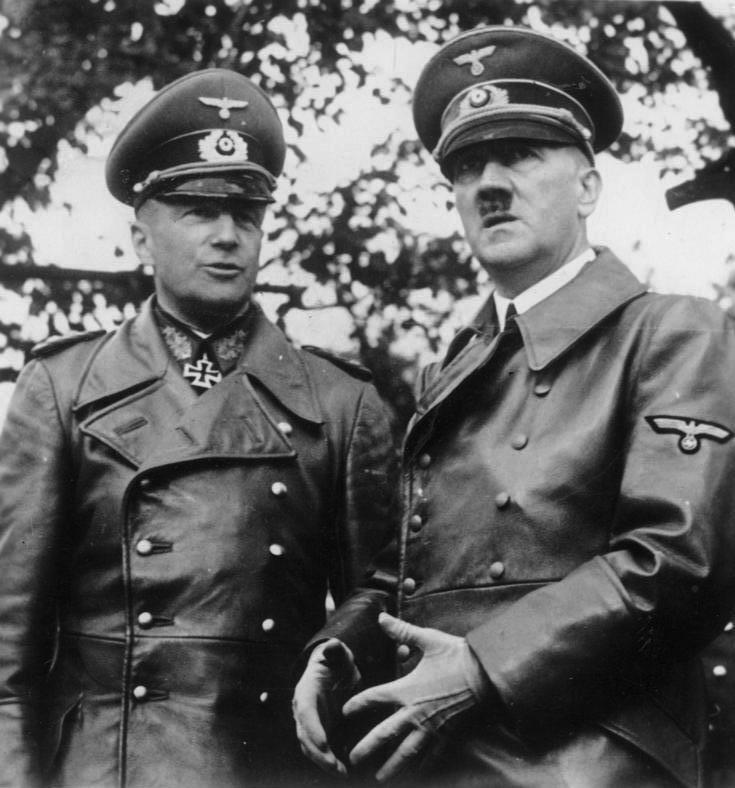
Walther von Brauchitsch and Adolf Hitler (1939)
Source
Source
Chapter Content
The ROVS as a Reservoir of Wehrmacht Interpreters
Alexei Aleksandrovich von Lampe (1885–1967)
Source
Source
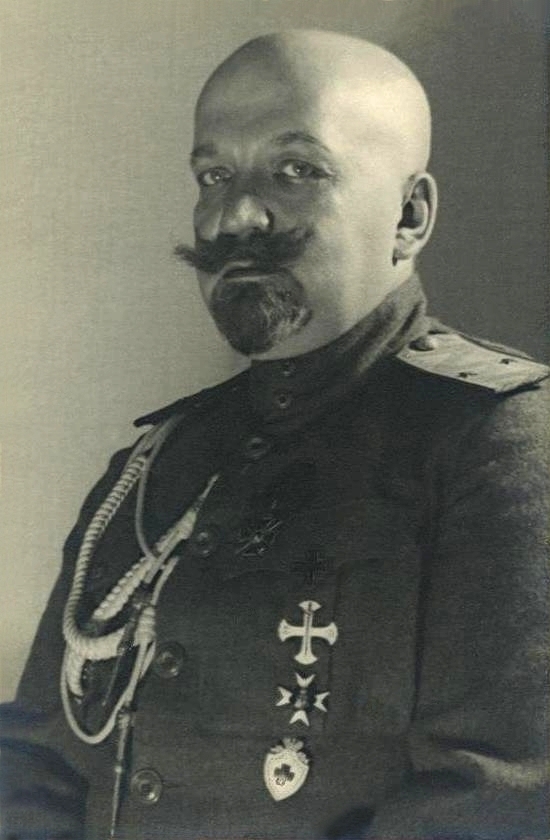
Dust jacket of the book Mein Kampf, written by Adolf Hitler. Courtesy of the New York Public Library Digital Collection.
Source
Source
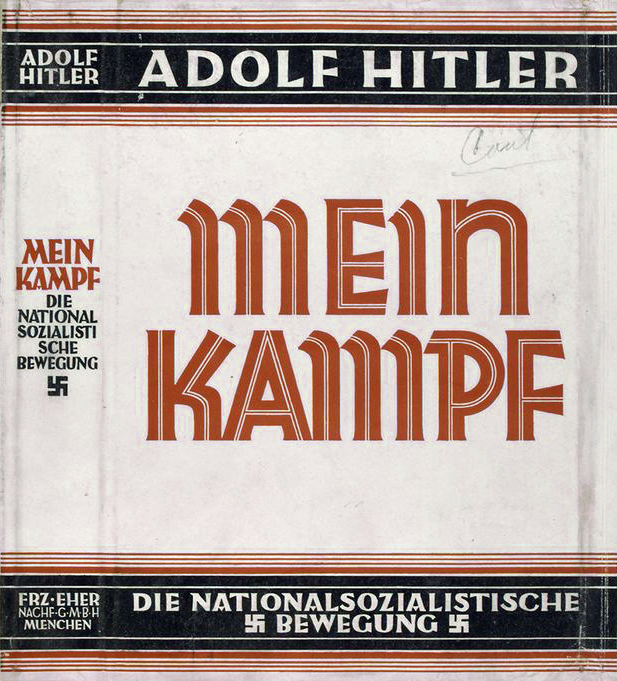
Explore the networks, citations, and documents using the buttons on the right
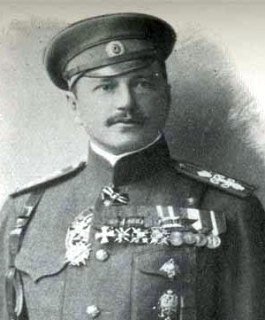
National Organization of Russian Youth (NORM)
Source
Source
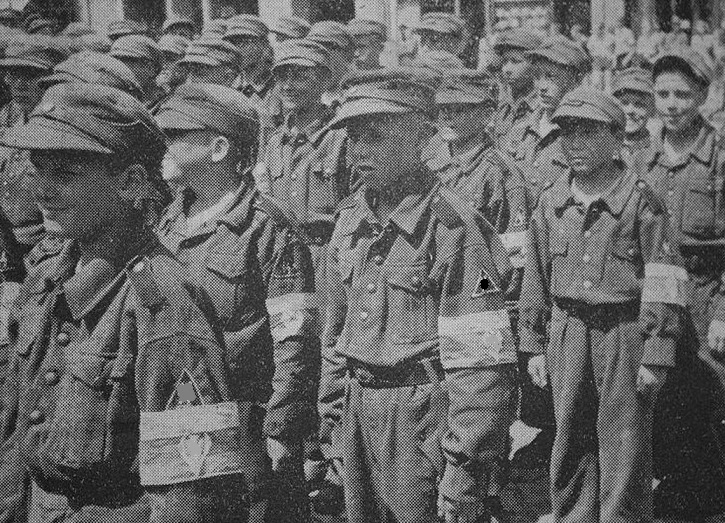
The White Russians as the Operational Force
behind the Nazis’ Policy in the East
behind the Nazis’ Policy in the East
Content Oriented Web
Make great presentations, longreads, and landing pages, as well as photo stories, blogs, lookbooks, and all other kinds of content oriented projects.

Content Oriented Web
Make great presentations, longreads, and landing pages, as well as photo stories, blogs, lookbooks, and all other kinds of content oriented projects.
Tilda Publishing
Appendix 1
NKVD document on Oleg Klimov
Appendix 2
Poland’s support for Georgian independence and anti-Soviet activities
Interwar Poland and the Intermarium Idea
Appendix 3
Appendix 4
Tilda Publishing
Georgian Collaborationism
Appendix 4
Tilda Publishing
Excerpts of Ruchenko memoirs
Appendix 5
Vineta Operation
Tilda Publishing
A report from the Kiev NKVD surveillance on Herman Strekker
Appendix 6


Content Oriented Web
Make great presentations, longreads, and landing pages, as well as photo stories, blogs, lookbooks, and all other kinds of content oriented projects.
[6] Giovanni Savino, “From the White Armies to Nazi Collaboration: Alexei von Lampe (1885–1967),” IERES Occasional Papers, no. 7 (October 2020): 8.
[7] Ibid., 12.
[8] Beyda, “Iron Cross of Wrangel’s Army,” 36.
[9] Savino, “From the White Armies to Nazi Collaboration,” 12-13.
[10] Beyda, “Iron Cross of Wrangel’s Army,” 48-49.
[11] Savino, “From the White Armies to Nazi Collaboration,” 19.
[12] Beyda, “Iron Cross of Wrangel’s Army,” 79
[13] Ibid., 46.
[14] Ibid., 78-79.
[15] Ibid., 95.
[16] Ibid., 46.
[17] Ibid., 175.
[18] Nigel Thomas, Hitler’s Russian & Cossack Allies 1941-45 (Oxford: Osprey Publishing, 2015), 376-377.
[19] See, in this regard, the work of Kayoko Takeda, notably: Kayoko Takeda, Interpreters and War Crimes (New York: Routledge, 2021).
[20] Beyda, “Iron Cross of Wrangel’s Army,” 147.
[21] Dmitry Aleksandrovich Zhukov, “Russian Children-Saboteurs and ‘Pupils of the SS,’” Šestaja glava
Russkie deti-diversanty i «vospitanniki SS», chapter 6 in Russkie esesovtsy (Moscow: Veche, 2010), https://www.litmir.me/bd/?b=145159
[22] Beyda, “Iron Cross of Wrangel’s Army,” 47-48.
[7] Ibid., 12.
[8] Beyda, “Iron Cross of Wrangel’s Army,” 36.
[9] Savino, “From the White Armies to Nazi Collaboration,” 12-13.
[10] Beyda, “Iron Cross of Wrangel’s Army,” 48-49.
[11] Savino, “From the White Armies to Nazi Collaboration,” 19.
[12] Beyda, “Iron Cross of Wrangel’s Army,” 79
[13] Ibid., 46.
[14] Ibid., 78-79.
[15] Ibid., 95.
[16] Ibid., 46.
[17] Ibid., 175.
[18] Nigel Thomas, Hitler’s Russian & Cossack Allies 1941-45 (Oxford: Osprey Publishing, 2015), 376-377.
[19] See, in this regard, the work of Kayoko Takeda, notably: Kayoko Takeda, Interpreters and War Crimes (New York: Routledge, 2021).
[20] Beyda, “Iron Cross of Wrangel’s Army,” 147.
[21] Dmitry Aleksandrovich Zhukov, “Russian Children-Saboteurs and ‘Pupils of the SS,’” Šestaja glava
Russkie deti-diversanty i «vospitanniki SS», chapter 6 in Russkie esesovtsy (Moscow: Veche, 2010), https://www.litmir.me/bd/?b=145159
[22] Beyda, “Iron Cross of Wrangel’s Army,” 47-48.
